*FYI - this post may contain affiliate links, which means we earn a commission at no extra cost to you if you purchase from them. Also, as an Amazon Associate I earn from qualifying purchases. Check out our Privacy Policy and Disclosure. for more info.
Scotland is one of those countries that has the world in a permanent chokehold. With idyllic lochs and glens, soaring Munros, vibrant cities, and absurdly charming accents… it’s hard to believe sometimes that this country is real.
But real it is my friends, and somehow, it’s even better when you get to see it all in person.
Unlike other places in the world where reality pales in comparison to the filtered photos, Scotland is somehow more magical, more captivating, and more charming than photos can convey… so long as you prepare properly.
I recently spent a month in Scotland, mainly for festival season in Edinburgh and there were a lot of silly things I had to learn the hard way. Turns out Scotland, while amazing, can have a few traps and easy mistakes that first timers fall into.
So, in this post, I’ll be sharing the Scotland travel tips I wish I had before my first visit. I hope you find them helpful!
1. Know the difference between Scotland, England, the UK & Great Britain
Alright, let’s kickstart this list of Scotland travel tips with a simple but very important distinction: the difference between Scotland, England, the UK & Great Britain.
While I’d like to think not too many people use them interchangeably, here’s what you need to know: Scotland is located in the northern portion of the island of Great Britain.
It is part of the United Kingdom but it’s culturally very distinct from other parts of the UK, like England, Wales & Northern Ireland.
So, keep in mind that when you go to Scotland, you’re experiencing Scottish culture and hearing Scottish accents – don’t call them English or refer to their accents as “British”.

2. Familiarize yourself with Scotland’s airports
When planning your grand arrival into bonny Scotland, you should know that there are five international airports in Scotland:
- Aberdeen International Airport
- Edinburgh Airport
- Glasgow International Airport
- Glasgow Prestwick Airport (AKA just Prestwick Airport)
- Inverness Airport
For most visitors from overseas, Edinburgh Airport is the most common point of entry and is well connected to the city by public transport like buses and trams.
NOTE: While its flights are limited, Glasgow Prestwick is the only airport in Scotland that’s directly connected to the country’s rail network, but all the other airports are well served by other forms of public transport like buses and trams.

3. Create a mixed itinerary to make the most of all Scotland has to offer
Now in terms of where to go, believe me when I say that there is SO much to see in Scotland that one trip, even fifty trips, wouldn’t be enough.
So, to make the most of your time, I’d suggest mixing things up and combining both city and nature travel, as well as famous and offbeat sights to get a varied taste of what makes Scotland so special.
While most first time visitors will usually visit some combination of Edinburgh, Glasgow & the Highlands, that’s just a tiny portion of the country, which the official tourism authority divides into over a dozen different regions.
So, be sure to look beyond the most famous areas to create a well-rounded trip you’ll never forget. Ever.

… So how can you find places more off the beaten path? Well, here are some ideas…
4. Prioritize exploring one area thoroughly vs. trying to cover too much ground
If your goal is to combine both iconic sights with more offbeat finds, then I would recommend picking a smaller area of Scotland to cover for your trip, rather than trying to cover too much ground.
The truth is there are loads of ultra famous places in Scotland like the Isle of Skye or Loch Ness, but if you do your research, you’ll likely be able to find many alternatives for famous islands, lochs or castles closer to your chosen base. Loch Ness for instance is literally only one of over 30,000 lochs.
So sticking to a small area will not only save money but also help you find hidden gems of your own.
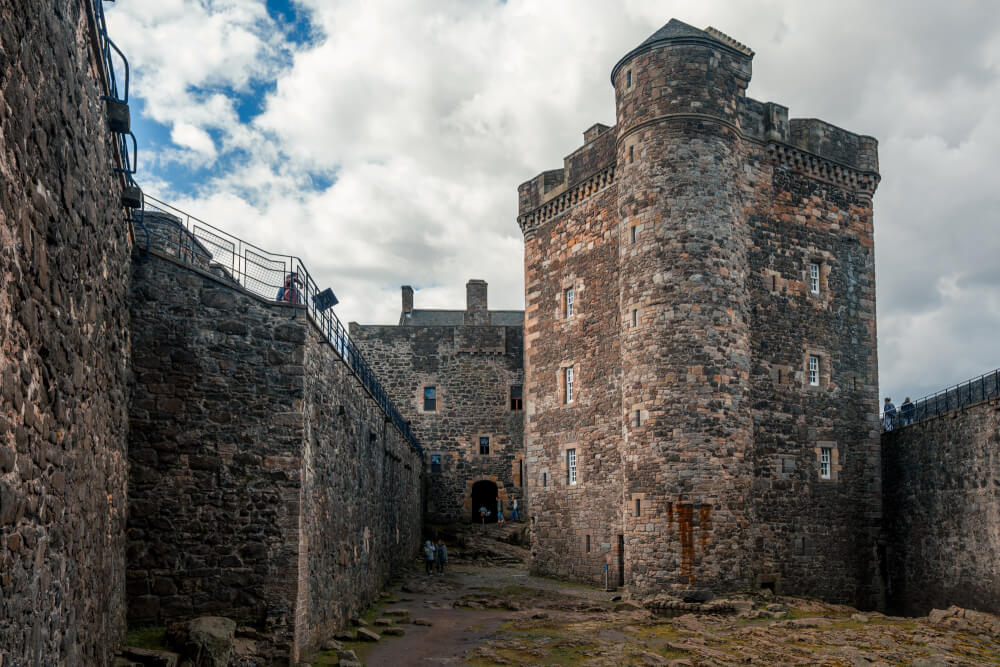
5. Get inspiration from local Scottish content creators
I would also recommend consuming content from creators based in Scotland because they’re way more likely to have covered offbeat places compared to bloggers who come for a week or two, or even a month like me.
(I mean give me time to catch up… I’m working on it!)
In the meantime, until I can empty my savings and drool reservoir in the foolish pursuit of ‘completing Scotland’, here are some Scotland-based creators I can recommend:
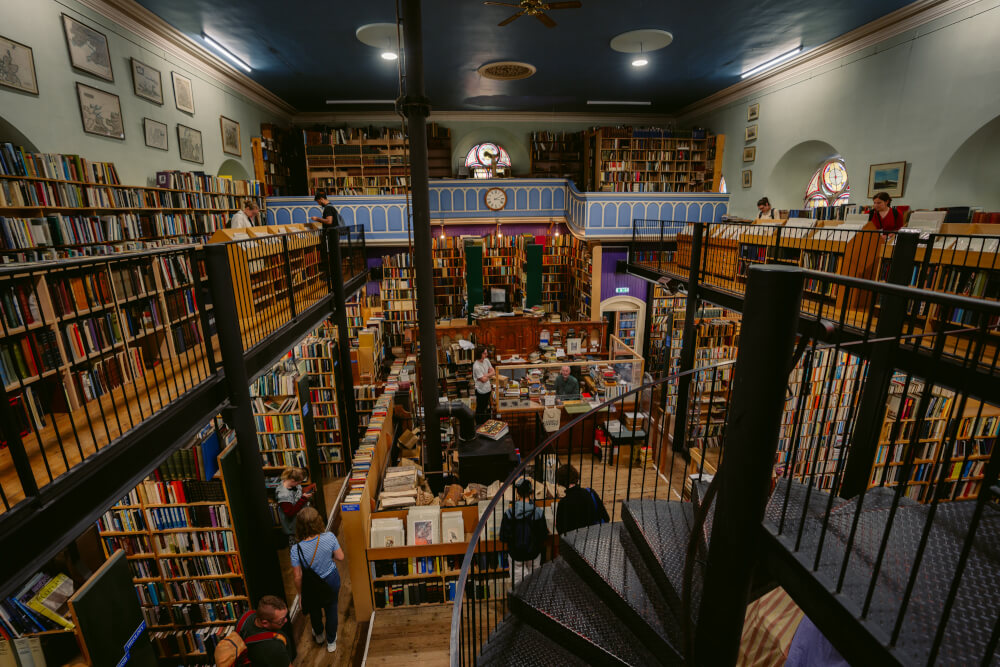
6. Rent a car if you want to explore in-depth
While public transport with trains and buses is pretty good between and within cities in Scotland, you will definitely need a car if you want to explore Scotland’s nature & countryside in-depth.
There are some seriously gorgeous road trips in Scotland like the…
- North Coast 500
- The North East 250
- And many many more
Plus having a car will just allow you to see a lot more on your own schedule, so if independence is important to you, then car rental is a must.
And I say this from experience! My boyfriend and I didn’t have a car during our month in Scotland because we stayed primarily in Edinburgh, and while we were still able to see a lot through booking day tours, this of course restricted us to some of the best known and most visited places in Scotland.
Granted, we still had a wonderful time, but there was no shaking the shameless tourist vibe, so if you’re someone who likes to explore more offbeat places, then you’ll definitely need a car for that.
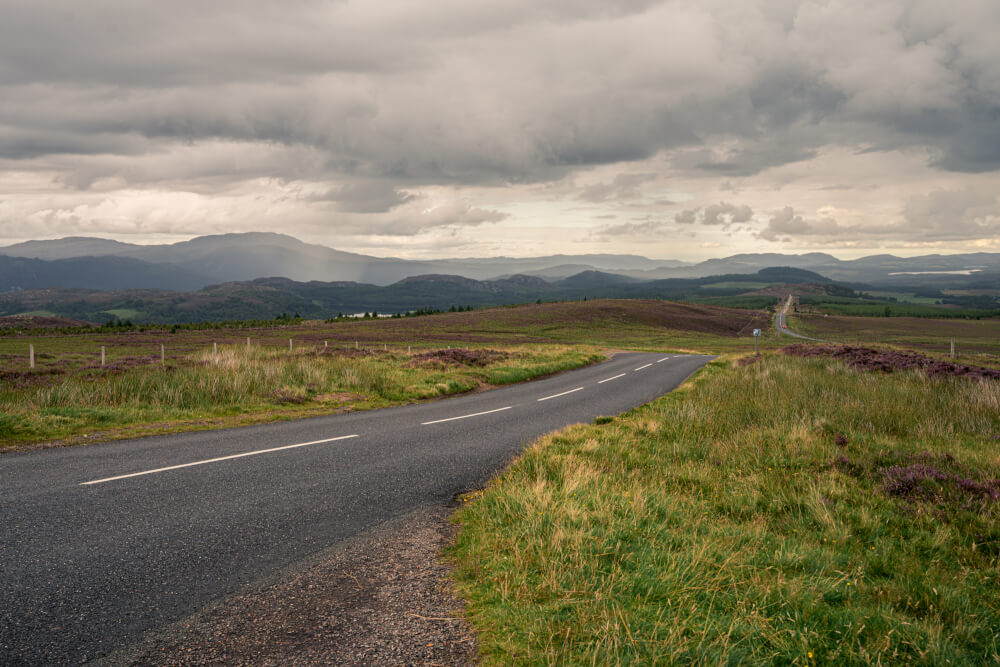
If you do rent a car though…
7. Prepare yourself for driving in Scotland
Apart from driving on the left side, roads can be quite narrow and regulations may be different to what you’re used to at home.
The legal alcohol limit for instance is stricter than elsewhere in the UK, which catches a lot of people off guard if they just want to have a beer with lunch, so be sure to read up on all the rules before you go rather than assuming.
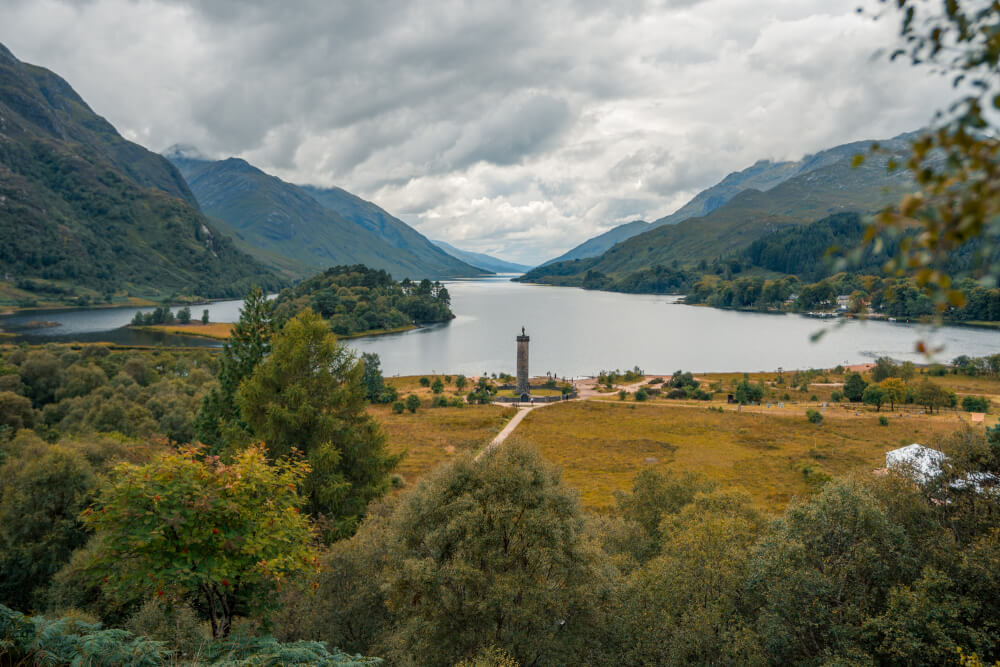
8. Plan for (or around) Scotland’s peak seasons
In terms of when to go, know that peak season is definitely summer, especially August in and around Edinburgh, when the entire city come alive with festival season. (Read my Edinburgh travel tips too if you’re headed that way!)
There’s also other fun summer events like Highland Games across the country, as well as some very popular winter festivals as well, including Hogmanay, the country’s very famous New Year’s celebrations.
This is why you should book as far in advance as possible for peak periods like summer and Christmas if you want to experience some of these cultural events… or plan to visit in off/shoulder seasons if you want to get away from the crowds.

9. Book ahead whenever possible
In any case, booking ahead for accommodation is always a good idea in Scotland.
A lot of popular tourist places like Inverness are relatively small and don’t have that many hotels compared to larger cities, so booking in advance is your best defense against eye-gouging prices.

10. Take note that there’s freedom to roam
Now, this is a Scotland travel tip that you’re not likely to use as an average tourist, but just to throw this out there, if you enjoy camping or just wandering out to new places with reckless abandon, Scotland is an excellent place for it thanks to their rules around ‘freedom to roam’ (AKA right to roam).
Thanks to the Land Reform (Scotland) Act of 2003, Scotland has this principle known as freedom to roam, which gives people the right to access most land and inland water for (non-motorised) recreational activities, with main exceptions being common sense areas like private gardens and fields with crops.
So, if you want to get out there and really experience Scotland’s nature, go for it!
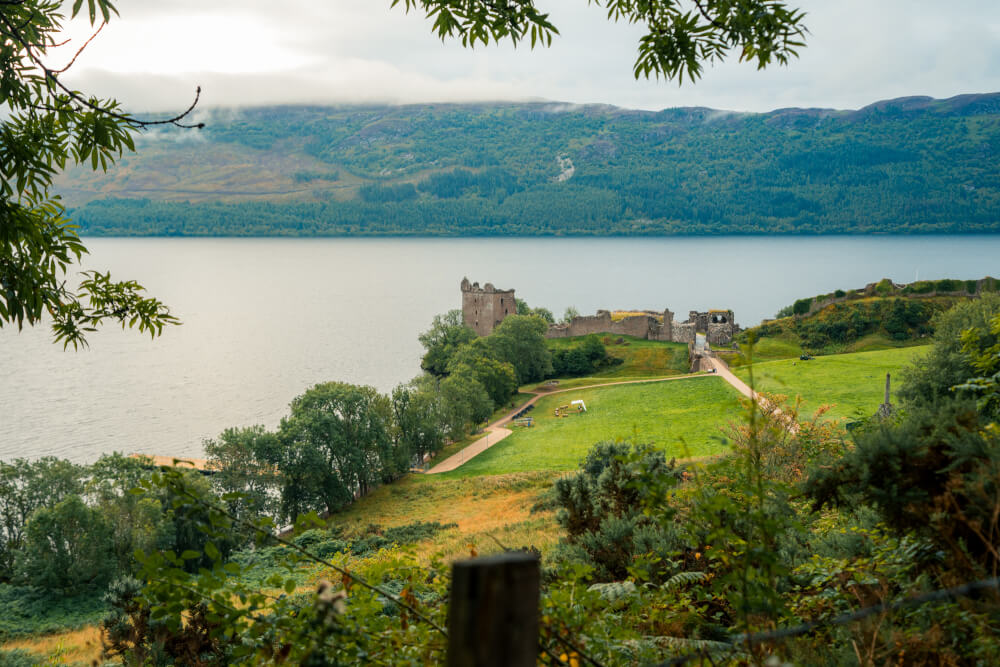
11. Get a travel-friendly credit card before your trip
As I mentioned in my England travel tips post, these days, contactless card payments are increasingly common across the UK, with many public transport systems relying on them, and even some establishments becoming card-only.
The same is true in Scotland, so if you don’t have a travel-friendly credit card already (meaning one that minimizes fees abroad) then I’d recommend getting one.
I used my Wise card pretty much everyday and never had any issues. They’re my go-to for simple travel-friendly cards, plus your card is sent to you for free so there’s really no downsides.
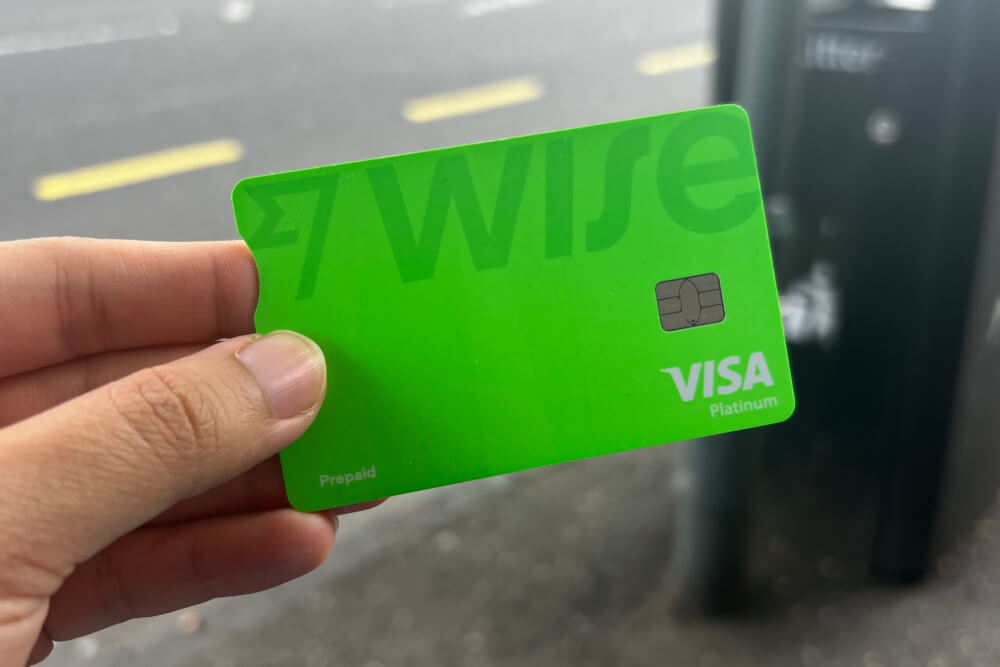
12. Be sure to try local Scottish delicacies
Alright, with that shiny new card in hand, it’s time to spend it on some tasty Scottish fare.
Here are some iconic Scottish dishes to fuel you through your sightseeing rampage through Scotland:
- Haggis: A famous dish that requires no introduction – keep an open mind and try it before you Google it. I actually think it’s pretty good! It’s usually served with neeps and tatties, which are mashed turnip and mashed potato
- Cullen skink: A creamy fish soup, usually served with some bread
- Chicken tikka masala: Marinated chicken in a spiced tomato-based sauce. Fun fact, it’s considered a national dish of the UK, which some credit to a chef in Glasgow
- Shortbread: THE buttery cookie beloved across the world!
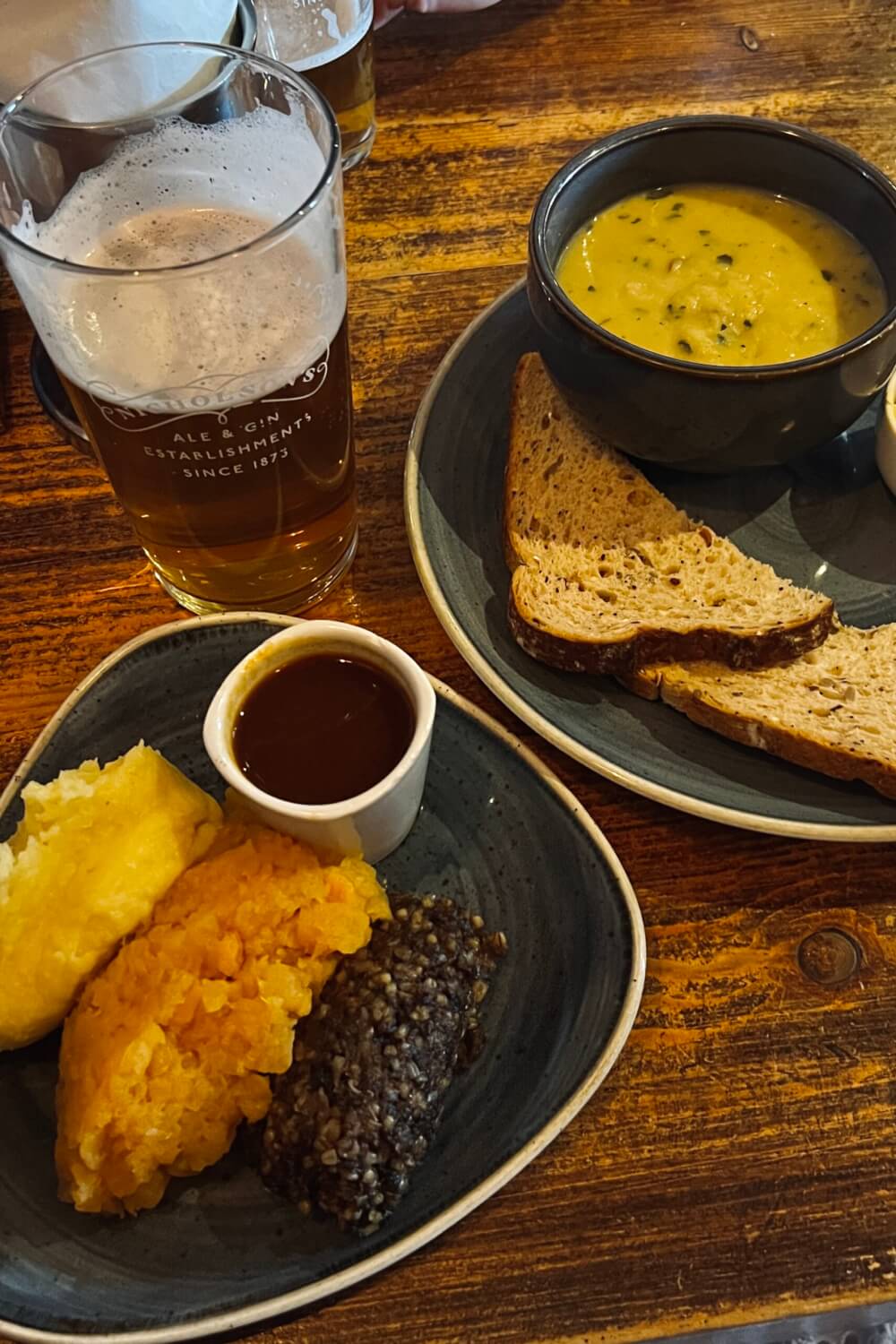
And if you want to try something more gluttonous, Scottish chippies are pretty famous for their ability to fry anything, from pizza to Mars Bars.
Many takeaway places also do munchie boxes which involve tons of (usually deep fried) fast food thrown into a box. Maybe good to try just once, for the sake of your arteries.
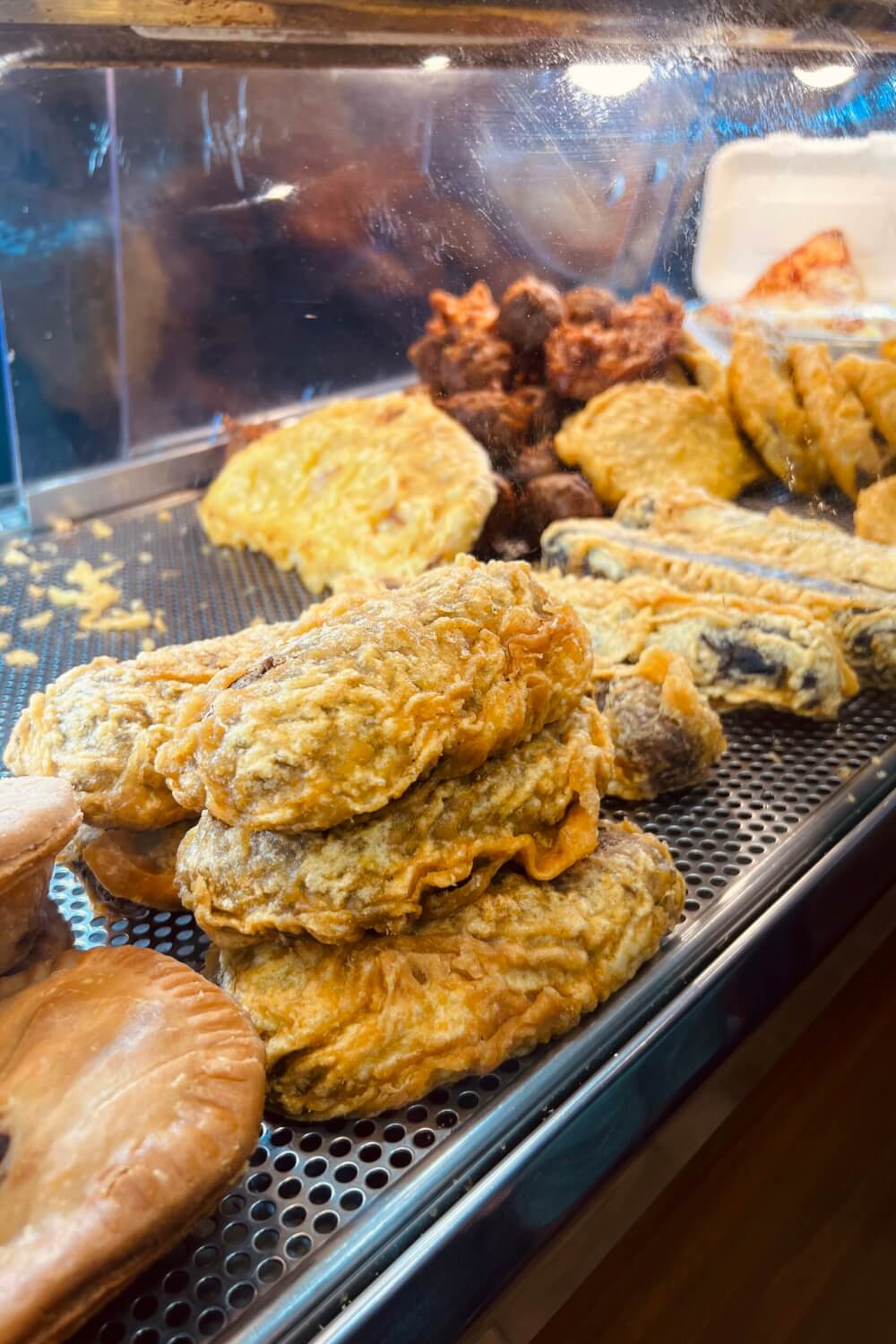
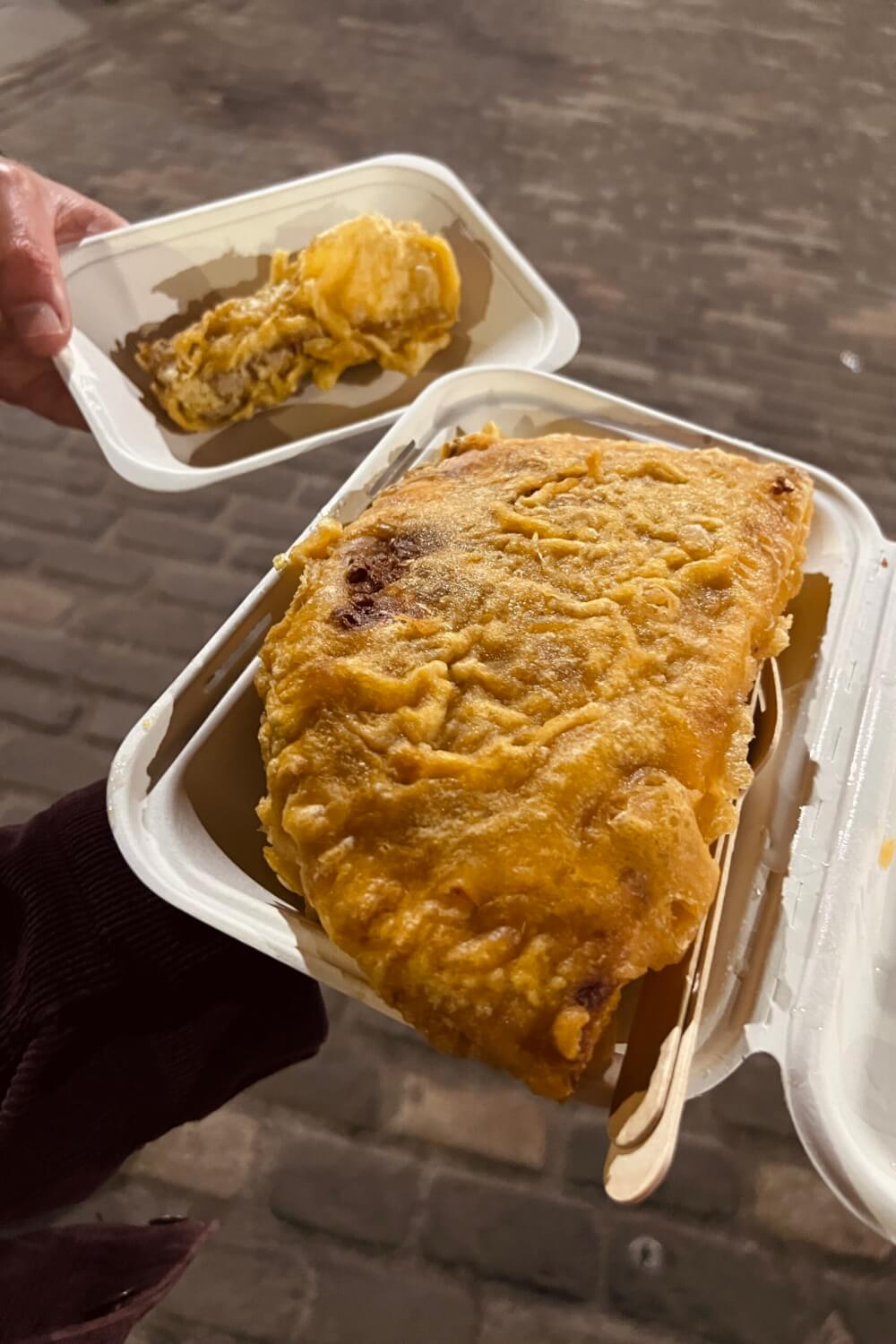
13. Make food bookings in advance
Now, in terms of restaurants, it might be smart to book in advance, especially during peak season.
This is especially true in smaller places like Inverness where there aren’t a ton of options. Luckily, these days, most food spots have fairly simple booking systems online when you search them up on Google Maps. For more old school restaurants, email or phone bookings also work well.
In any case, if you have your heart set on a particular place, make sure to book ahead whenever you’re able to.
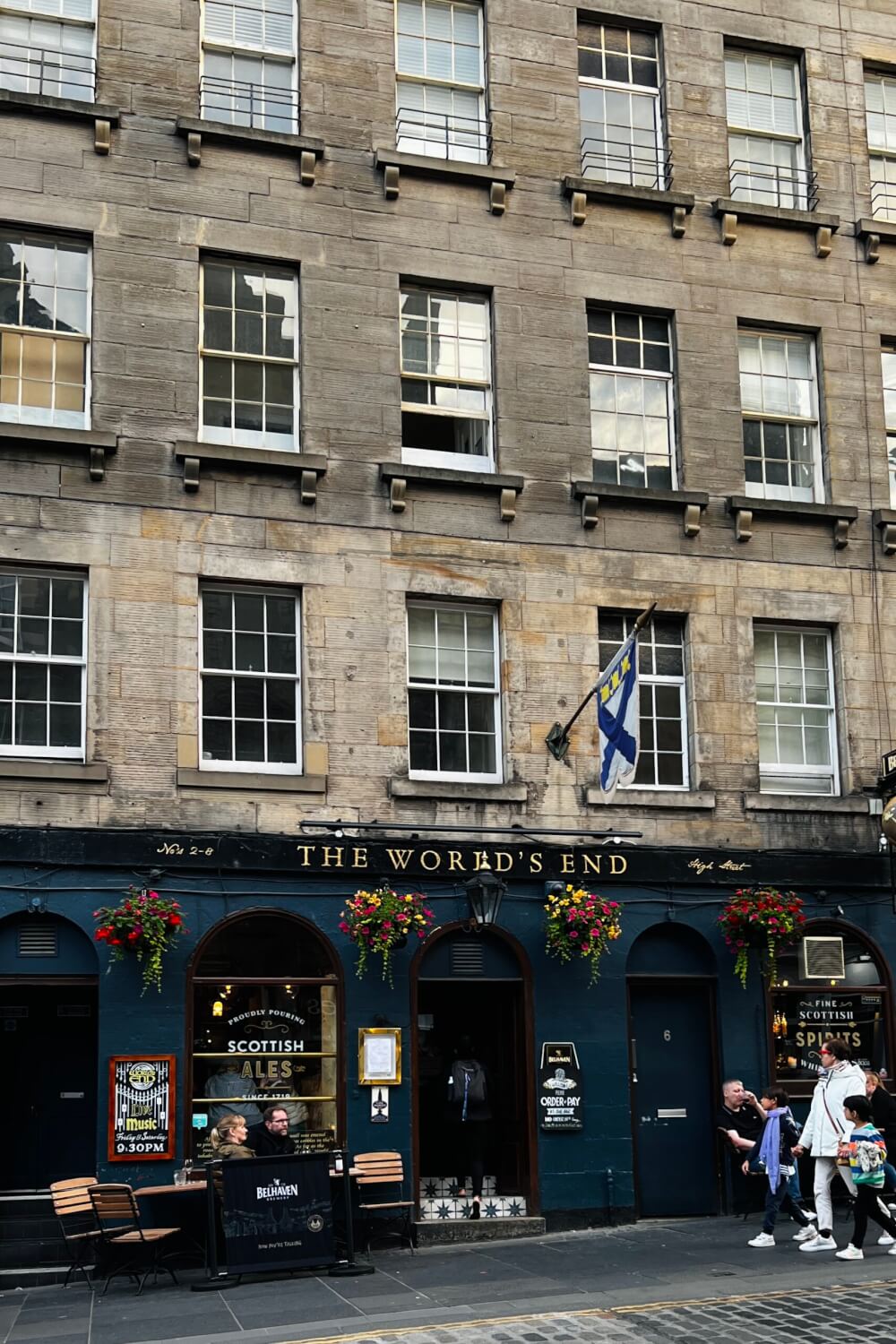
14. Try whisky, but know the ground rules
Now another important tip when in Scotland is to try whisky.
… I mean duh. Of course you will! In the name of culture.
I do have to share some ground rules I learned the hard way though, so remember the following:
- Call it a whisky not a scotch
- Be sure to order it as a dram of whiskey, not a shot
- Remember whisky should be sipped slowly and savoured, not just quickly knocked back
And if you’re overwhelmed with the selection which is inevitable, a good trick is to just ask the bartender for a recommendation… BUT do give them some general guidance on your preferences otherwise it’s as ridiculous a question as asking “can you recommend me a food?”
Generally, some taste profiles that go into whisky include smokiness, fruitiness, nuttiness, peatiness and how floral it is. So be prepared with your preferences so they can guide you to the right recommendation.
NOTE: It goes without saying, only ask for recommendations when it’s not super busy. If you’re at a pub and they’re up to their eyeballs in orders, that’s generally not the time to ask for their whisky insights.
Lastly, this is unlikely to come up as a tourist, but be mindful that whisky in Scotland is spelled without the e. This is a mistake I made a lot! Whiskey with an e is more often used to describe Irish whiskey and we don’t talk about her here.

15. Book a whisky experience if you can
Now if you’re into whisky or new to it, one fun Scotland tip is touring a distillery or doing a whisky experience at some point.
Whisky is a drink that’s easier to appreciate when you know more about it, which is why I’d recommend booking some kind of tour or experience that teaches you about whisky and how to appreciate it, rather than just a standard tasting.
There’s over 100 whisky distilleries to choose from, many of which offer tours. It’s shamelessly touristy but one of the best things to do in Edinburgh (IMO) is the new Johnnie Walker experience in Edinburgh. I thought it was SO much fun, and super informative for a newbie.
Just be warned: you will definitely walk out of there a brainwashed Johnnie Walker convert. I definitely hoarded a few bottles at Duty-Free…

That said, be sure to…
16. Try gin and other tipples in Scotland too
I was really pleasantly surprised during my month in Scotland to see that gin is a pretty big deal, with 70% of the UK’s gin produced here.
The craft beer scene is also growing rapidly, so be sure to diversify your booze portfolio beyond just whisky.
… All in the name of culture, of course.

17. Be sure to try a glug of IRN BRU
One of my favourite fun facts is that Scotland is one of the very few places in the world where Coca Cola isn’t the best selling soft drink. The unlikely national hero? IRN BRU – a bright orange soda with a flavour that’s really hard to describe…
It is considered one of THE most quintessentially Scottish things though so be sure to try it while you’re in Scotland!
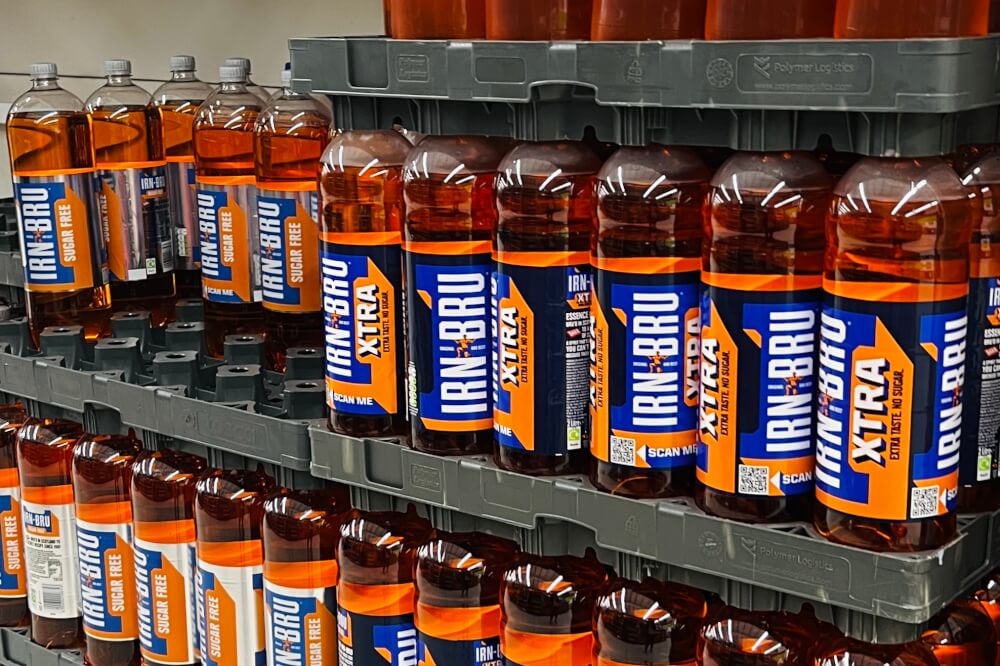
18. Take advantage of meal deals for budget-friendly feeds
Now, dining out all the time in Scotland can quickly add up to budget-destroying levels, so a good solution if you’re just on the go is heading to a supermarket to get some picnic foods, or in a pinch, trying an almighty Meal Deal.
Meal Deals are a staple of UK chains that allows you to grab a main, a snack and a drink for less than £5. Some chains now require you to sign up for a free loyalty card (eg Tesco Clubcard) to unlock the best deals though, so be mindful of that and do it in advance if you think the savings would be worth it.
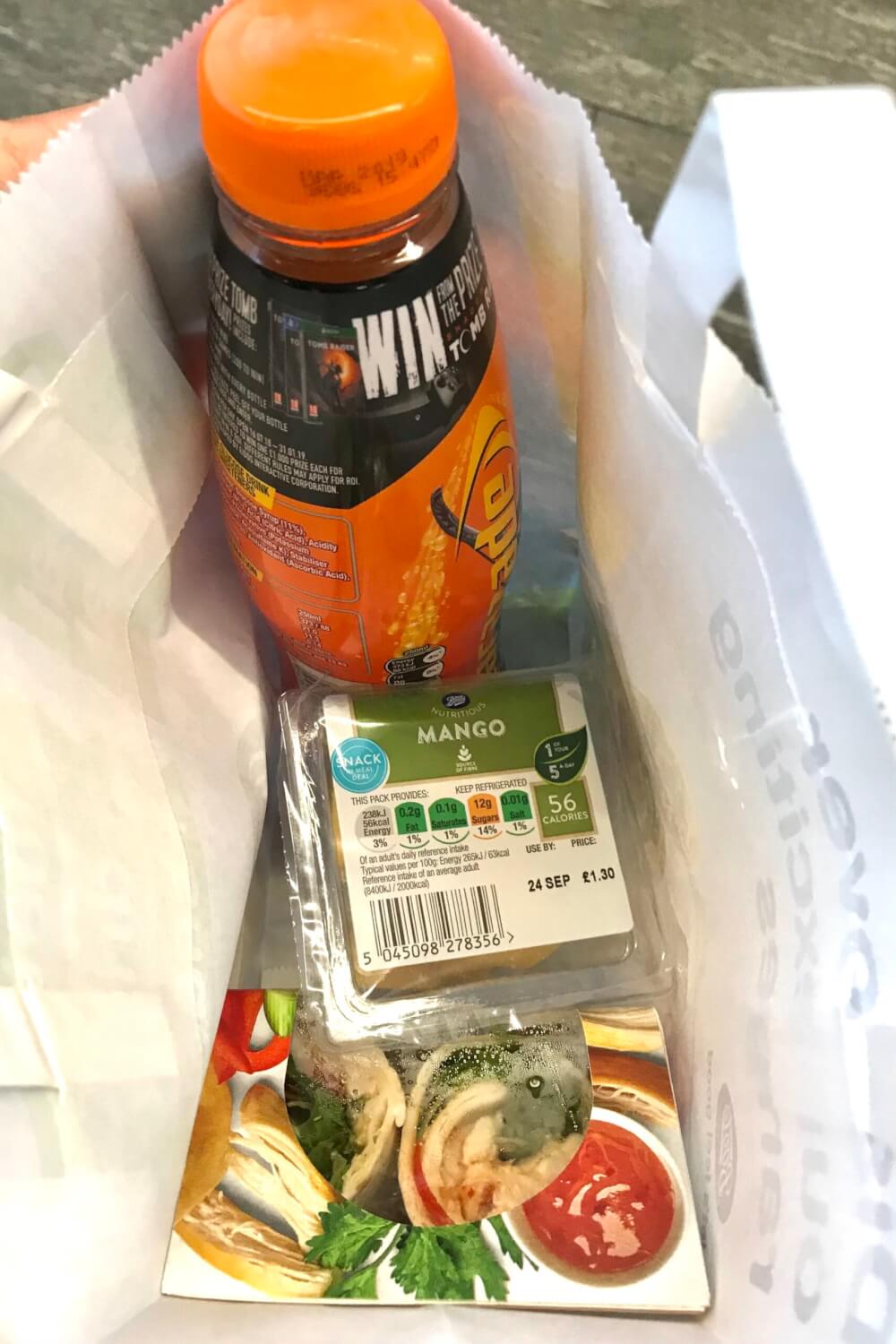
19. Beware of seagulls
Random but wildly important Scotland tip: if you find yourself dining outdoors at any point, DO be mindful that sneaky seagulls may be lurking nearby, ready to snap your food away in seconds.
… You’ve been warned.
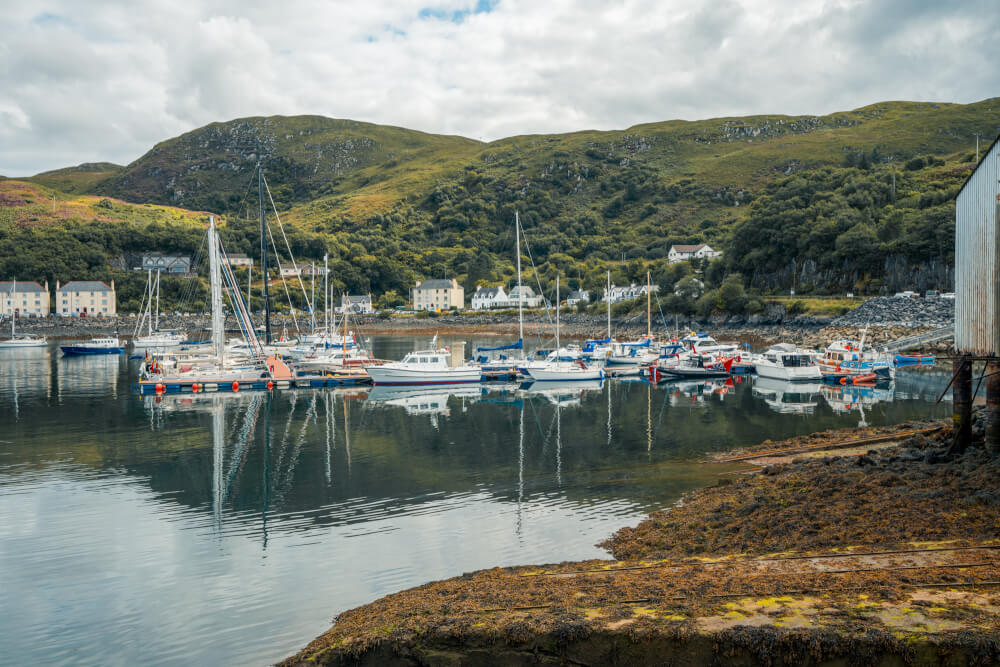
20. Don’t assume that all of Scotland is kilts and bagpipes
Now, moving over to Scotland culture & etiquette tips, I want to remind you that Scotland is more than just its stereotypes.
… Which can be hard to believe, because in touristy areas, they really do ham things up for tourists, so you’ll see a ton of tartan, endless kilts, and plenty of bagpipes, but Scotland is a modern country with plenty to offer beyond its more traditional draws, so be sure to experience that side of Scotland too in addition to the fun touristy stuff.
NOTE: Please also refrain from asking weird questions based on stereotypes. I overheard a tourist ask a man if he wears anything under his kilt. Whether a misguided tourist question or bad flirting, I’d advise against it.
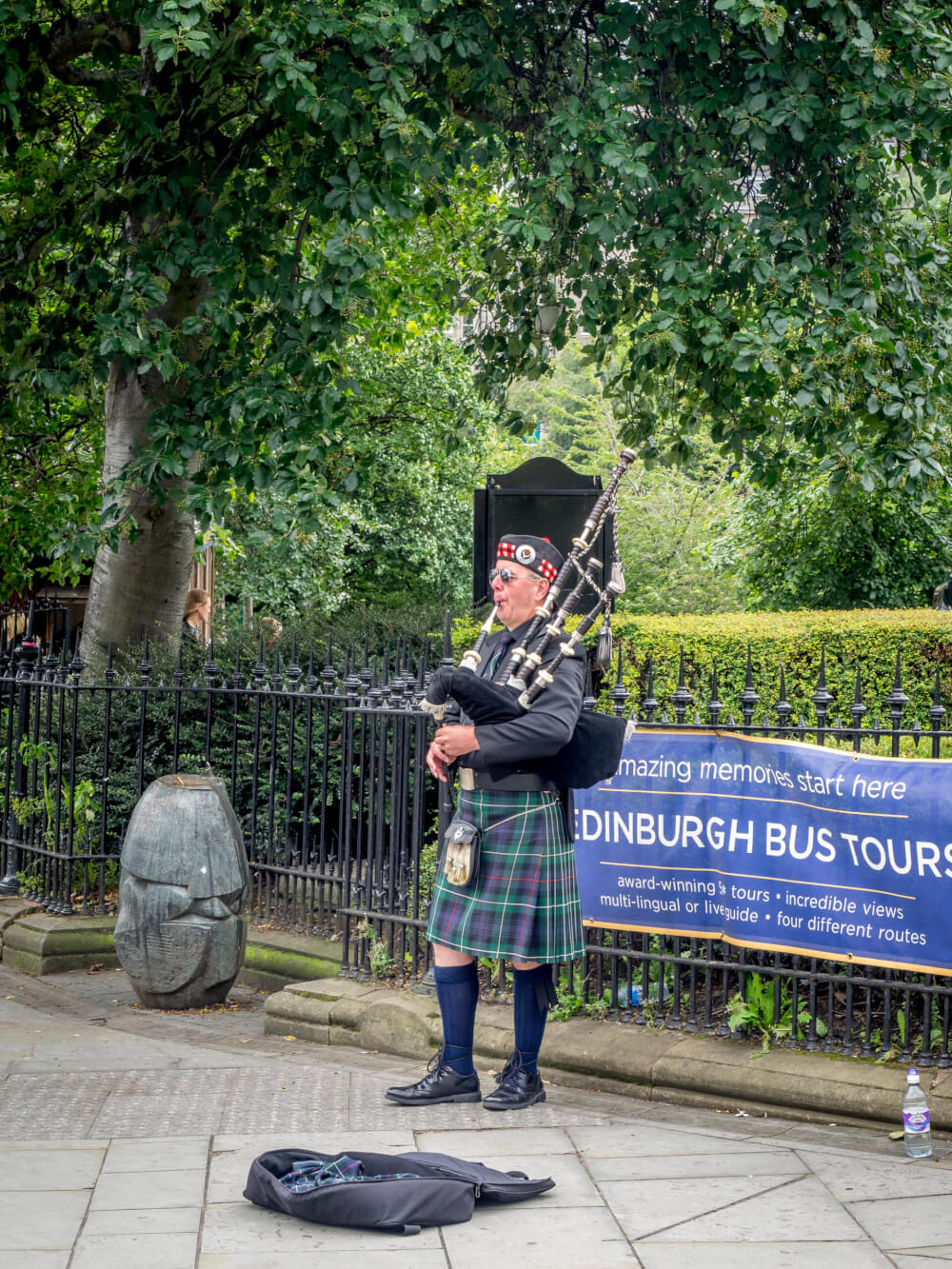
21. Be prepared to hear some Scots & Gaelic
Language-wise when travelling around Scotland, you will be 100% fine with English, but do know that depending on where you are, you may encounter Scots or Gaelic (which you’ll see a lot on road signs).
Now take note that while they’re spelled the same, Scottish Gaelic (pronounced Gah-lick) is not the same as Irish Gaelic (pronounced Gay-lick). They both descended from the same source but are now two very distinct languages.
And while as a tourist, you won’t need to learn Scots or Gaelic to get by, there are some pieces of vocabulary used in place names so it’s worth knowing them.
For instance…
- Loch = lake
- Ben = peaks or mountains
- Glen = valleys
- Alba = the Gaelic name for Scotland, seen quite a lot, like in the localized channels for BBC, which is known in Scotland as BBC Alba
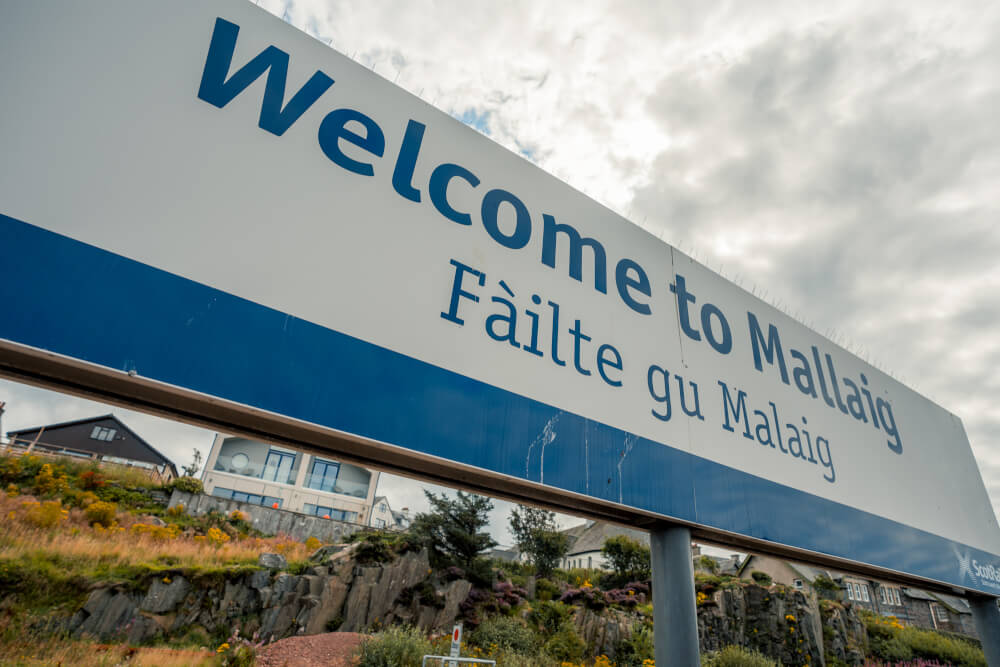
22. Know what it means to “bag a Munro”
Another piece of vocabulary to know is Munro, which refers to mountains in Scotland over 3000 ft. This doesn’t come from Scots or Gaelic though, they’re named for Sir Hugh Munro, who famously published a list of Scotland’s highest mountains.
Hardcore people today make a hobby out of “bagging Munros” which means reaching the top of these mega-mountains. There’s 282 of them, and the current record is held by a badass woman known as Jamie Aarons, who bagged all 282 Munros in 31 days.
31. DAYS. That’s an average of over 9 Munros a day.
Meanwhile, here’s me:

Now if you’re not up for bagging Munros, a more feasible challenge might simply be to…
23. Learn to pronounce Scottish place names somewhat correctly
One of the most common tourist mistakes you encounter in Scotland is first time visitors pronouncing words/names wrong, which is fair because not all names are pronounced like how they’re spelled in English.
So, here are some common ones to take note of:
- Edinburgh is pronounced Ed-in-bruh, not Eden-Borrow, Edin-borrow, or Edin-berg
- Glasgow is pronounced Glaz-go, not not Glass-G’ow
- Culross is pronounced Coo-Riss, not Cull-Ross
… and many, many more.
The key is to listen out for how locals are pronouncing it whether that be your taxi driver, your guide or even the automated announcements the train station.
That said, there’s obviously slight differences depending on accents, and Scottish people tend to be really nice and forgiving so don’t stress too much.
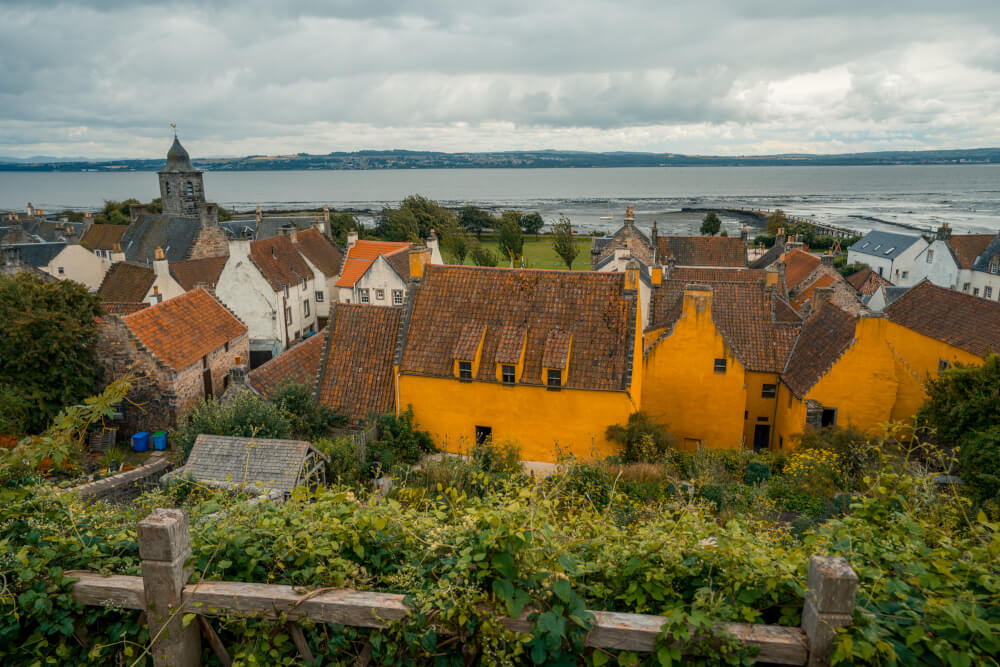
24. Beware of sightseeing passes
Unfortunately, paid attractions in Scotland can be quite pricey, and while sightseeing passes (e.g. ones where you pay a set fee for many different attractions at once) do exist, many of them aren’t worth it unless you’ll be visiting a wide range of sights across the country.
Some common ones include…
- City-specific passes like the Edinburgh City Pass
- Historic Scotland
- National Trust for Scotland
- The Explorer Pass
So, before blindly purchasing one of these passes, I would make sure to first total up the cost of the attractions you actually want to see, then comparing it to the pass cost. Often you’ll find it’s not worth it unless you’re staying for a long time and visiting many attractions during your visit.
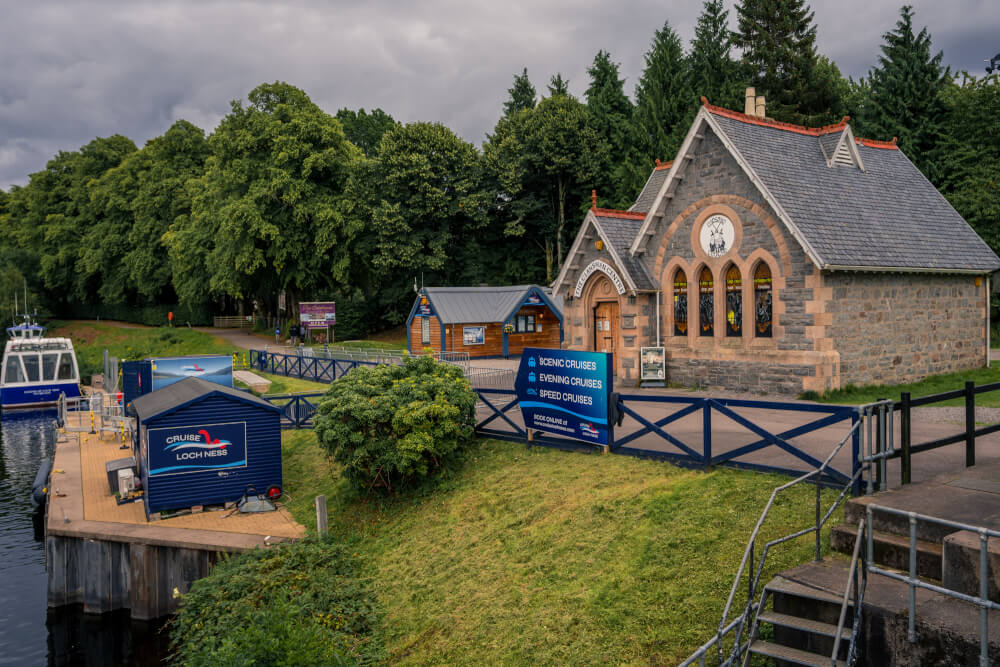
25. Take advantage of all the free attractions
One of my favourite things about Scotland is just how many free museums and attractions there are to visit.
In pretty much every destination, you’ll find free things to do, so before you spend all your money on attraction tickets, be sure to search up free things to do in your destination of choice. Odds are, you’ll find plenty!
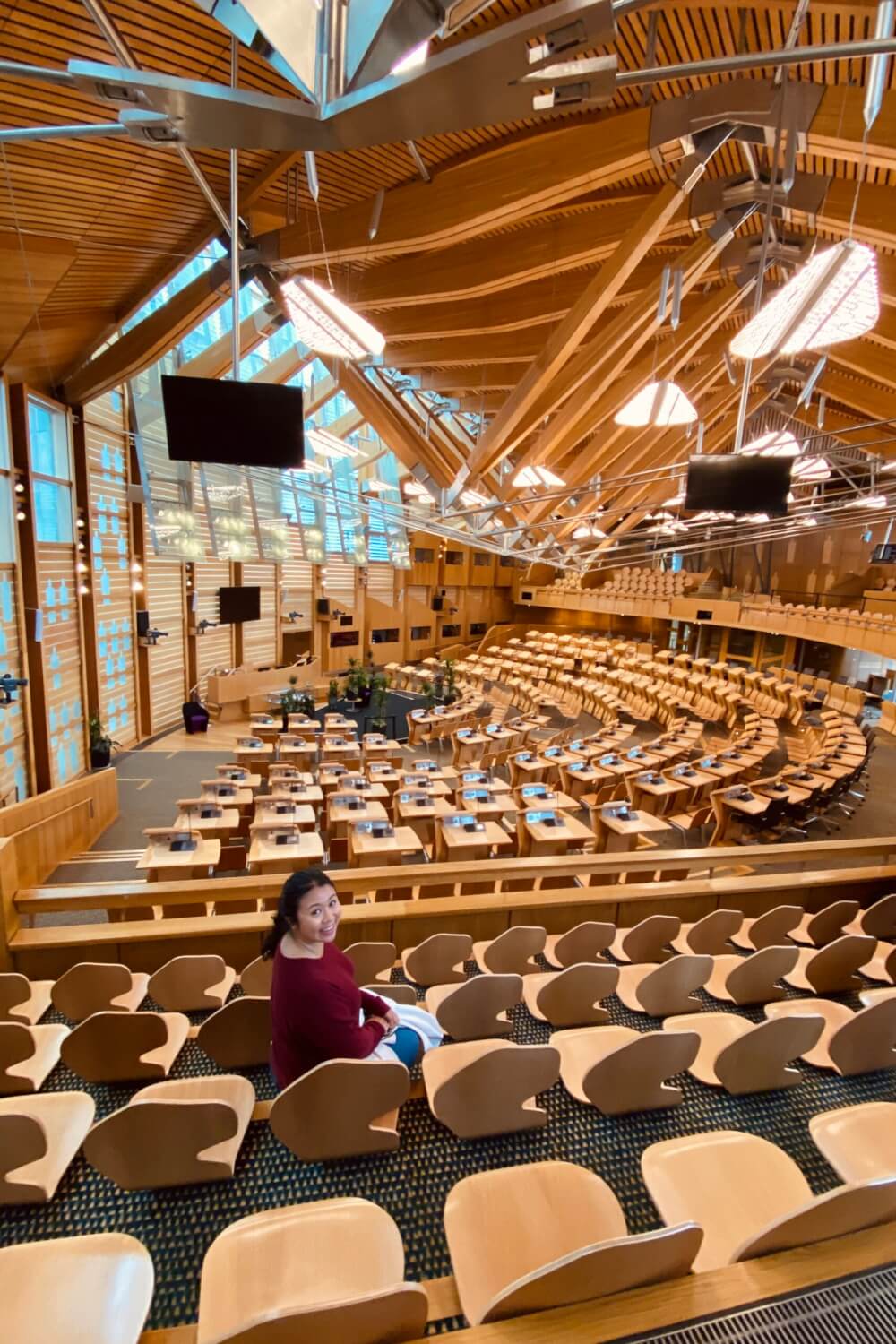
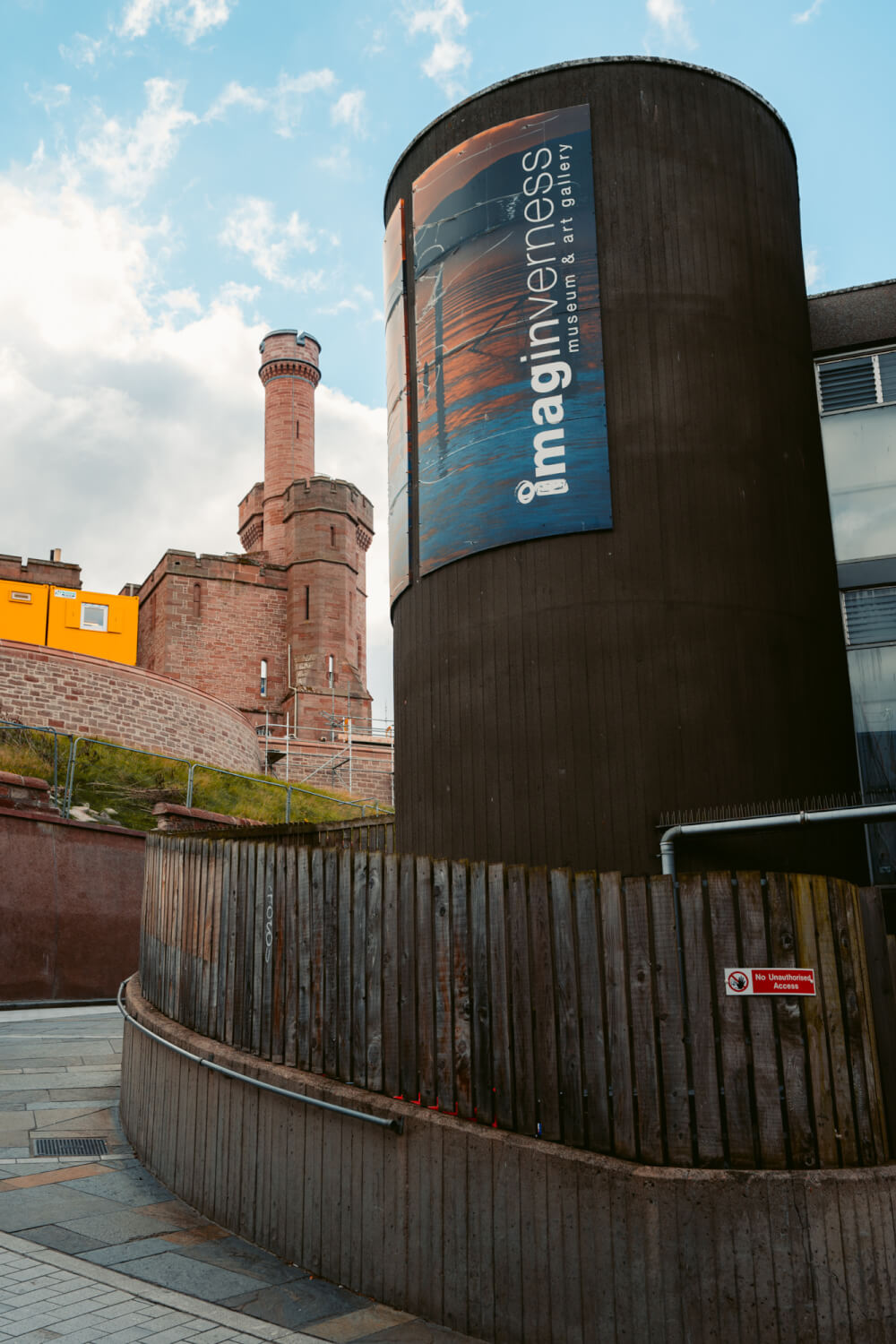
26. Get familiar with Scottish accents before your trip
Now, another tricky thing for first time visitors in Scotland is if you’re not used to it, understanding the Scottish accent may be a challenge, especially once you leave big cities and start venturing farther out.
But a fun Scotland tip for getting used to the accent is simply watching movies and TV shows set in Scotland. This will also help you adjust to some vocabulary differences, as well as just get you excited for your trip.
Some recommendations include (obviously) Outlander if you’re into that kind of show, or Mary Queen of Scots and Outlaw King for some handy historical context and beautiful backdrops.
PS: This might be a good time to mention that Braveheart is wildly inaccurate but entertaining nonetheless.
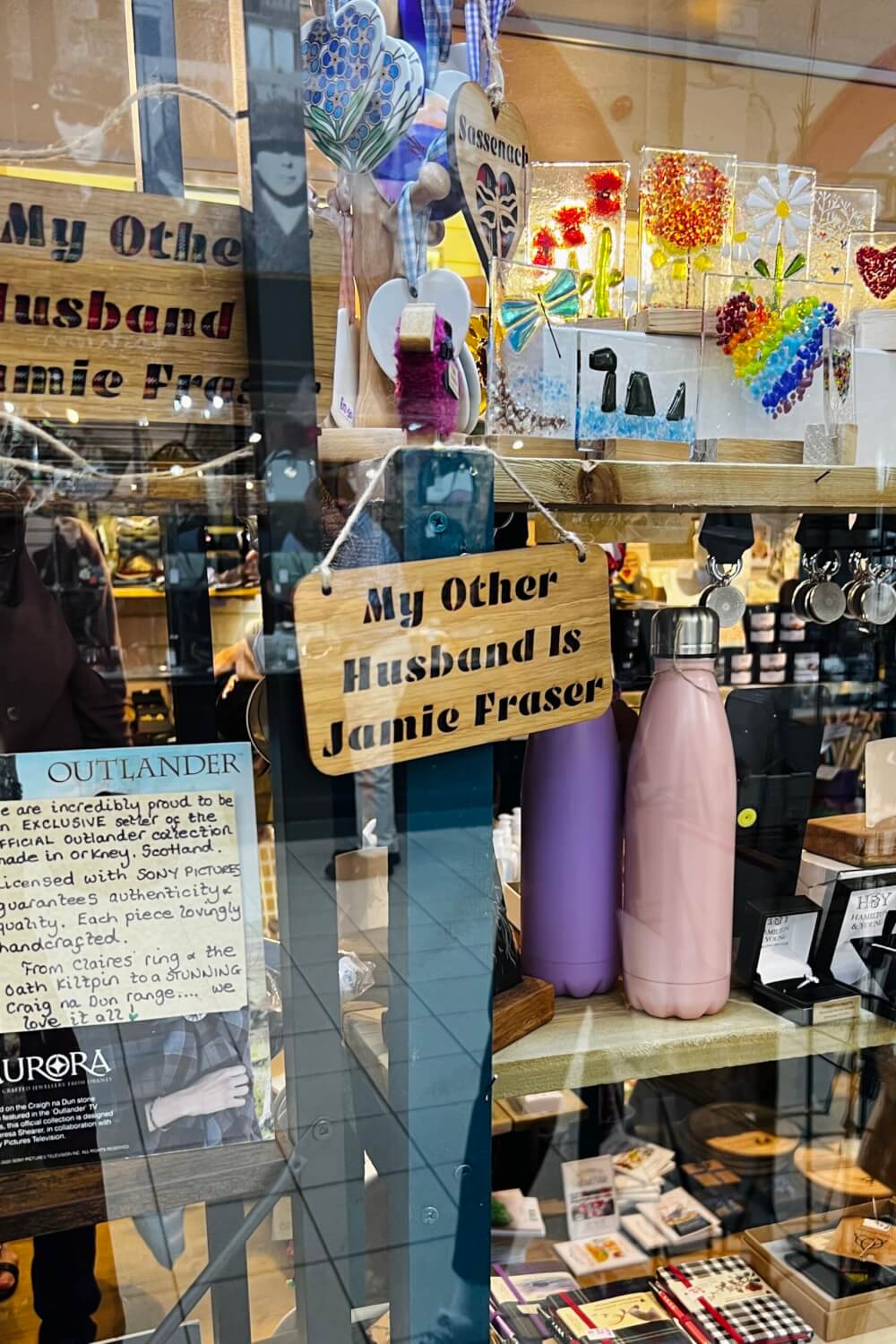
27. Carry a bit of cash, especially coins
While paid toilets aren’t a universal thing in Scotland like in other countries (e.g. Germany), apparently 18 councils across the country do charge a small fee for using the toilet (usually 30p or less).
I noticed this when I was in Inverness and the surrounding area, with many public toilets (even in train and bus stations) charging a small amount like 10 or 20p for the facilities, so it’s not enough to just bring some cash, coins are a must.

28. Scottish money is different, but English bills are welcome too
Plus beware that while Scotland does use the pound just like the rest of the UK, there are specific Scottish bills/notes that are unique.
This shouldn’t be too big of a deal since English pounds are accepted everywhere as well, and technically speaking these Scottish bills are legal tender throughout the UK, but do withdraw your cash sparingly as sometimes places elsewhere in the UK can be a bit funny about accepting Scottish banknotes.
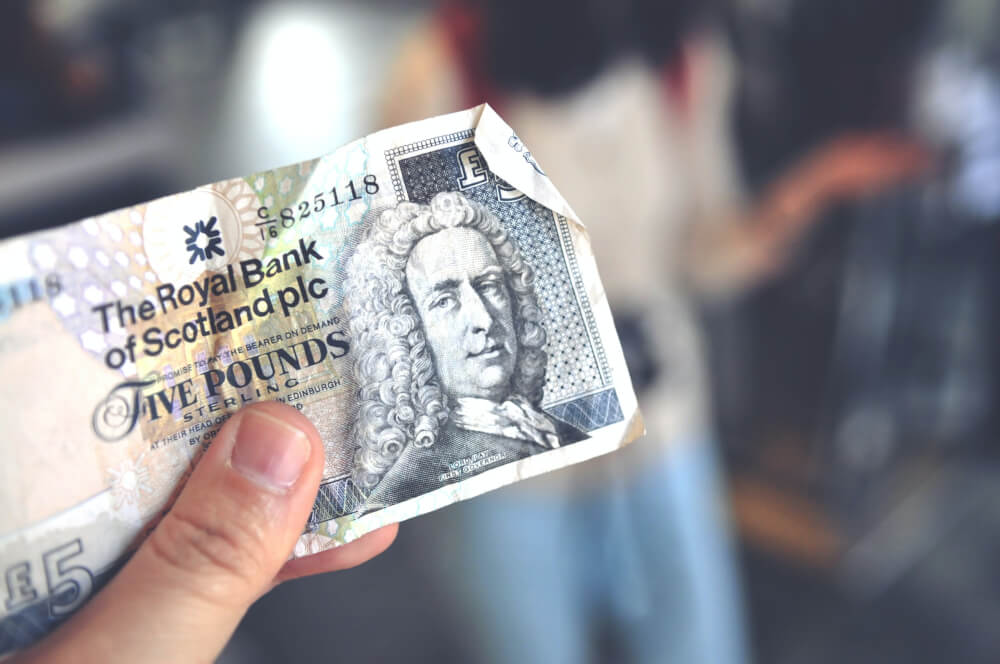
29. Tip around 10% for good service
Now in terms of tipping in Scotland, tips aren’t mandatory in all settings but usually when it comes to sit-down table service, 10% ish is common for good service.

30. Don’t stop in the middle of the sidewalk (AKA pavement) for photos
Having experienced this too many times during my month in Edinburgh, I now completely understand the local rage against it.
Scotland is beautiful and you will be compelled to take photos every three seconds, but before you do so, make sure you pull over to the side and not block anyone’s way.
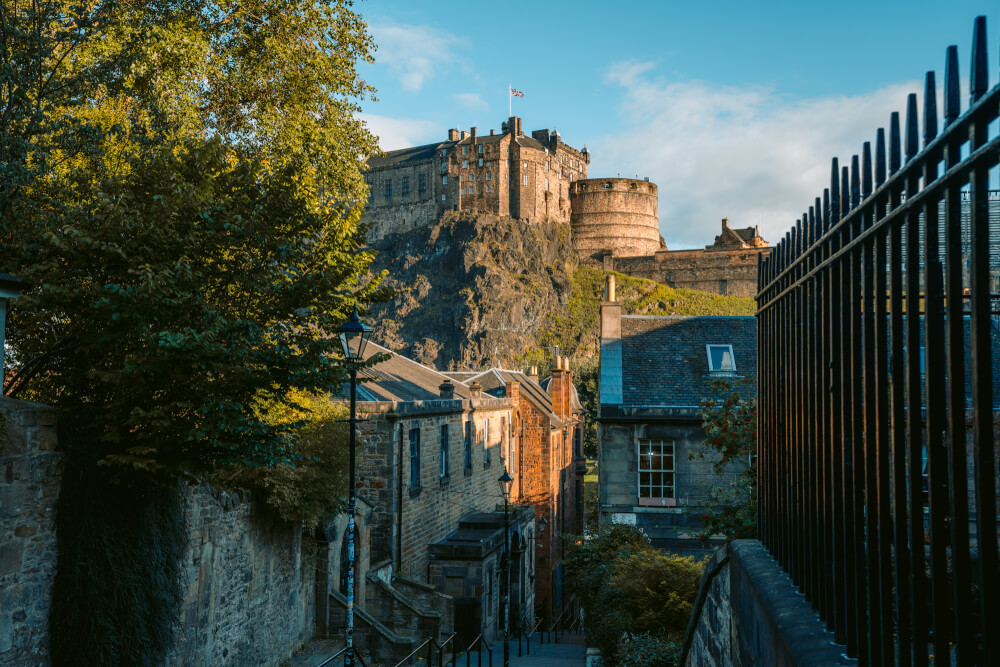
31. Be prepared for all kinds of weather
Scottish weather is notoriously gloomy and random. So even if you are coming in the summer, don’t expect summer weather all the time…
Instead, be prepared for all kinds of potential weather at all times by packing layers that are versatile for different conditions.
I would definitely prioritize a good waterproof or windproof jacket over an umbrella because with Scottish rain comes Scottish wind which makes many umbrellas quite useless.

32. Prioritize comfortable walking shoes
And, unless you have a specific event you know you’ll be going to, no need to bring heels or fancy footwear. Comfort is key!
Which is how I ended up with silly outfits like this:

33. Beware of midges and ticks
If you plan to do any hiking in Scotland, be sure to prepare against the notorious Scottish midges and ticks. Bring insect repellant and lots of it!

34. Make sure you go to a place with some live music
There’s honestly no better way to finish off a day of sightseeing in Scotland than with a cold beer and live music. Be sure to add this into your itinerary at some point! It’s so much fun.
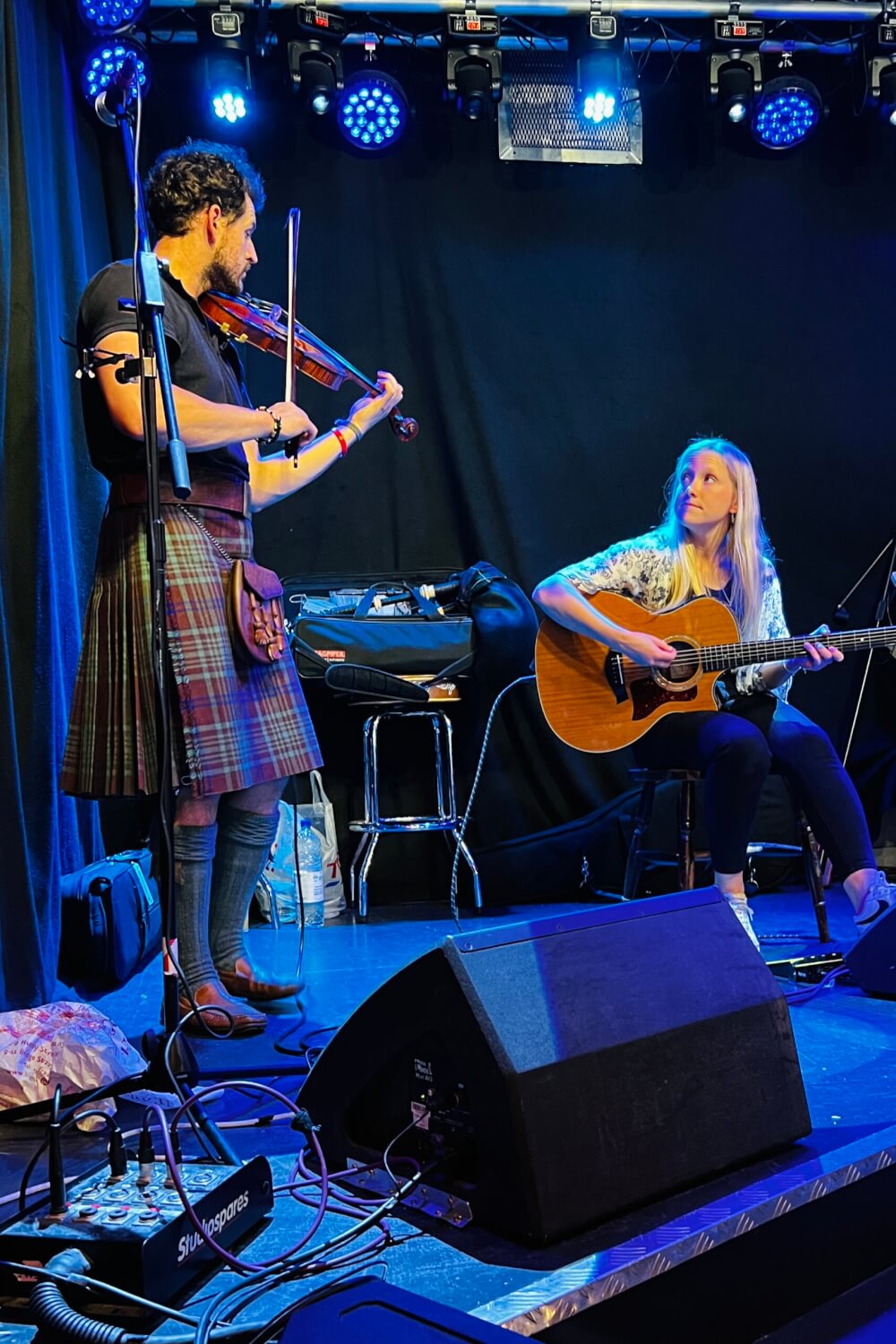
35. Avoid cheap souvenir shops and outfits in busy tourist areas
Lastly, a few Scotland tips for buying souvenirs: the first one being to avoid the tacky souvenir shops you see in busy touristy areas.
Sadly, these shops aren’t necessarily selling you the best quality stuff and if you’re looking for wearable souvenirs like a Tartan scarf that will actually last, then getting one from a pricier but more reputable brand might be a good idea. A lot of the souvenir shops sell polyester replicas which aren’t the best quality.
The same idea goes for other souvenir items – finding an independent shop stocked with local makers might mean more unique and better quality gifts to bring home.

36. Avoid buying the cheap souvenir shop tartan berets & kilts
On a similar note, I would also personally avoid buying & wearing cheap souvenir shop accessories, like tartan berets, especially the ones with red hair attached to them, just because people in Scotland really don’t wear those in their day to day lives and they look a bit silly.
The same applies for buying souvenir shop kilts. I honestly can’t imagine a scenario where it would make sense for a tourist to buy and wear a kilt while they’re just out exploring… especially because they don’t tend to be day to day attire for Scottish people anyway.
At the end of the day though, wear whatever makes you happy!

37. Be sure to leave space in your luggage
Last but not least, remember to pack light when you come to Scotland so you have room for goodies to bring home!
There are many excellent potential souvenirs in Scotland, but they tend to be bulkier items like wooly goods, so make sure you have the space for it.
PRO TIP: You can always pack a second bag (or nest a small suitcase within a larger one) so you only have to check a second bag on the way home.
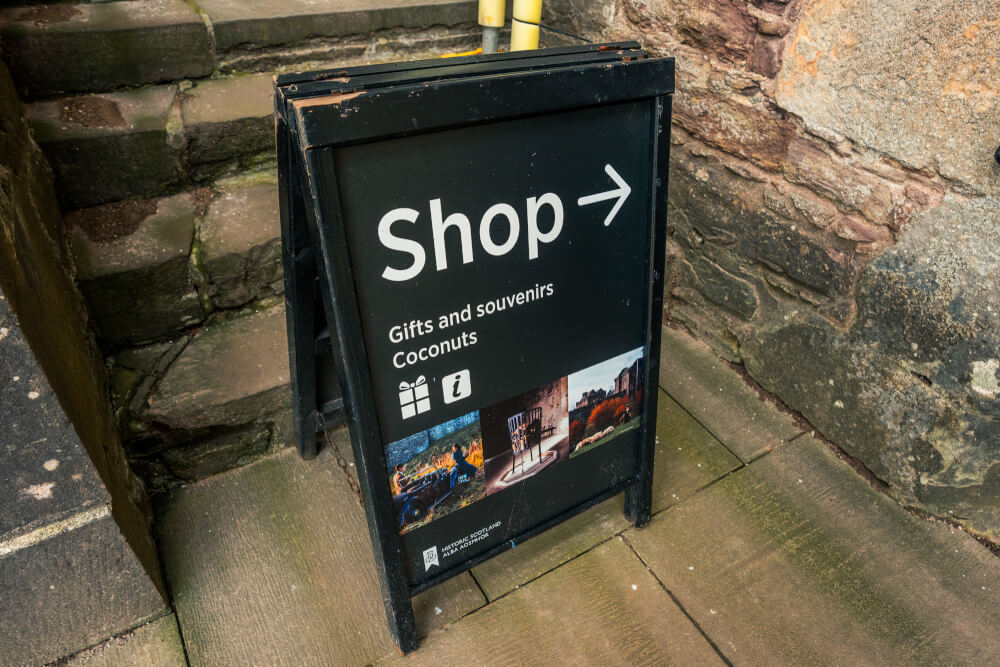
Did I Forget Any of Your Favourite Scottish Travel Tips?
Let me know in the comments! Safe and happy travels 🙂


Christina.
A good fair and accurate assessment of Scotland.
Allan( a Scot from Kirkcaldy)
Thanks so much, Allan! 🙂